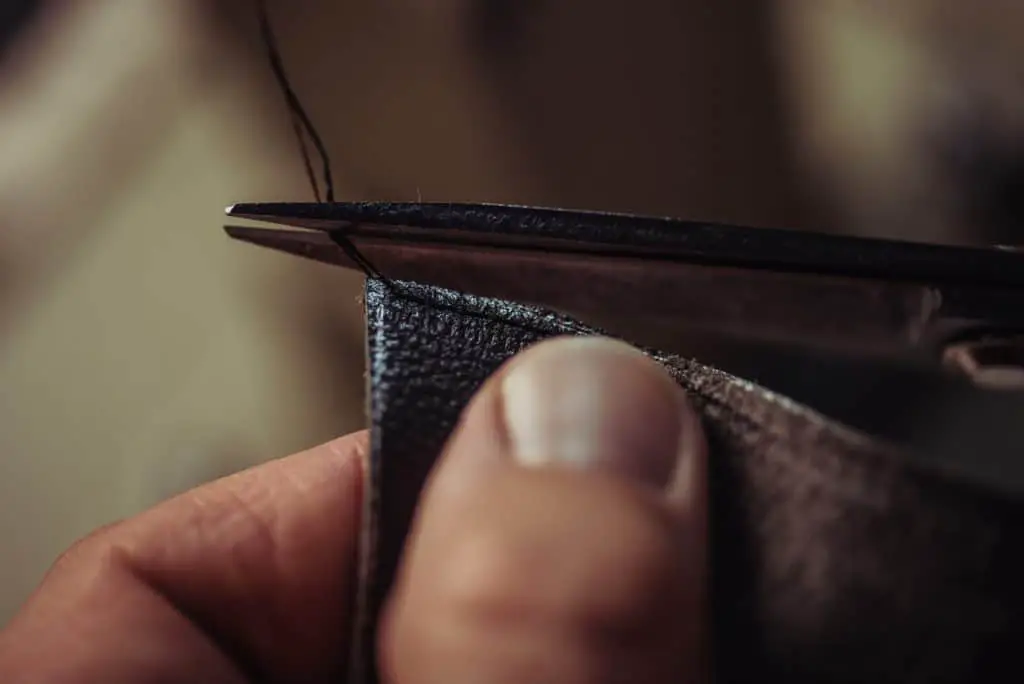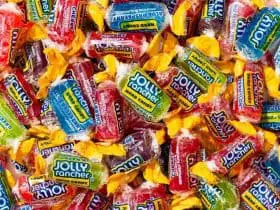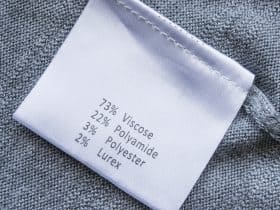A few years ago, veganism was merely a fringe movement dismissed by the public for being too ideal or unrealistic. However, it has gained more supporters to its side in recent years, turning it to a widely accepted and often encouraged approach.
Ten years ago, questions about whether fur or leather were ethical were quickly dismissed. If clothing items were fashionable, people wore out, regardless of whether the elements and the methods used in the production of such materials are safe for the animals or the environment.
A rapid change prompted by animal rights activists shaped the world of fashion in recent years. It has become crucial to find better alternatives to non-vegan materials. One of these alternatives is vegan leather, also known as leatherette, faux leather, or merely artificial leather.
In this article, we’ve gathered all the information you need to know about vegan leather; what it is, what it is made from, is it widely used, among other questions that typically concern consumers who take the time to reflect upon their choices.
Buckle up, ladies and gentlemen, for the industry is dark and full of terrors!
What is it?
As you have probably guessed, its name is indeed misguiding! Because vegan leather is NOT leather. Vegan leather is a cruelty-free alternative to real leather. It is made to look and feel like genuine leather, minus the cruelty used against animals.
You might be wondering if it is indeed healthier than real leather, why don’t many fashion brands widely adopt it? Why is real leather there in the first place? Read on to find out.
What is it Made From?

As the founder of Brave GentleMan, Joshua Katcher, says on his website “The handsomeness of an object should be matched by the handsomeness of how it was made;” this should be the way you think before making a purchase.
The production of vegan leather is similar to that of real leather in that both use a fabric base. While this fabric base is animal skins for real leather, it’s often a vegan material like polyester for faux leather.
Other alternatives to animal leather include PVC leather, PU leather, piñatex, paper, waxed cotton, and recycled rubber. In this article, we will discuss the first three items since manufacturers primarily use them.
But before we get further into details, let’s pinpoint that vegan leather is made through attaching a fabric backing to a plastic or a natural coating. This coating can either be PVC, PU, or pineapple leather. Let’s discuss each.
1. Polyvinyl Chloride Leather (PVC)
Different sources list Polyvinyl Chloride as the third-most widely produced synthetic plastic polymer. It enjoys a myriad of features that make it a robust alternative to real leather; it’s cheap to produce, water-resistant, and easily softened and molded.
To begin with, PVC has two forms; one is rigid while the other is soft. However, softening the rigid form is made easier thanks to the use of chemicals known as plasticizers. Plasticizers are substances added to the material during production to increase plasticity and, hence, reduce friction and make it shapeable.
Since the chemicals used for making PVC leather are generally cheap, many people opt to get coats, jackets, and even bags from PVC. But is it the safest option out there? We’ll find out.
Both chloride and carbons are used for making PVC, and these generally come from fossil fuels. Are you making a fully-vegan decision out there?
Additionally, while it takes nearly 50 years for animal leather to decompose, PVC products take approximately 500 years to decompose. We understand that you’re trying to make an ethical decision to save the poor animals, but you’re actually harming the environment in the process.
Does this mean we’re arguing against vegan leather? Absolutely not. That’s where we introduce you to the polyurethane leather.
2. Polyurethane Leather (PU)
PU is another largely used type of plastic. It is made through coating a base material out of polyester, cotton, or nylon with polyurethane.
While the process involves the use of chemicals to an extent, PU is crucially better because it is made by adding an adhesive to the fabrics rather than chemicals and other petroleum compounds.
Additionally, since PU is thinner than PVC, it renders itself useful for making bendy and soft jackets, purses, and backpacks.
Polyurethane leather promises you good quality that is both flexible and resilient, and it can be used for several products.
One downside, however, is that PU is more expensive than PVC. But you should really compare it to real leather, which is unnecessarily expensive.
Before you purchase any item that is labeled as “vegan PU,” make sure it’s not bicast or split leather. Bicast leather is a hybrid of both animal leather and synthetics. You want to read the labels carefully, and if you doubt the authenticity of the product, always ask the retailer for clarification, so you don’t end up with a non-vegan jacket!
3. Pineapple Leather (Piñatex)
Piñatex is a natural textile made from pineapple leaf fiber and used as a leather alternative. It is equally ushered into both fashion and furnishing industries.
Some fashion brands, large and small, prefer piñatex because it is more sustainable compared to other alternatives to leather. It is made from waste products, which would’ve gone to the garbage containers otherwise. No extra land, water, or fertilizers are needed to get the material.
Piñatex is said to be sturdy, lightweight, and flexible. Since it can be easily cut and shaped, it can be used for a variety of items. Its flexibility renders it easy to fold and embroider.
Does this mean that Piñatex is absolutely harmless? Unfortunately not. The material is not biodegradable, especially that it has a petroleum-based coating, which doesn’t decompose easily. Yet, it’s still a better alternative to real leather, PVC, and PU leathers.
Characteristics
In this section, we will help you learn more about the features of vegan leather, how it smells like, feels like, and the fundamental differences between faux leather and animal leather.
Smell
One thing that modern technology couldn’t do is replicate the organic, natural smell of real leather. The smell of vegan leather, on the other hand, is often described as fishy or plastic, and it can be really challenging to get rid of without scratching the material.
Vegan leather smells so because of the numerous chemicals and plastic components used to create it, but it’s nothing you cannot get rid of! Read on to find our section on vegan leather maintenance.
Texture
Vegan leather feels a lot like animal leather, but slight differences can be observed. For instance, since vegan leather is artificially grained, it is much less breathable. Additionally, vegan leather does not form a patina as it grows older.
However, because special compounds are used to make it softer, vegan leather is very similar to its non-vegan counterpart, but it wears down faster.
Vegan Leather vs. Real Leather: Which is Better?

If you’ve adopted veganism very recently, you might find it harder to make the shift from animal to vegan leather. You wonder whether it’s worth it and whether vegan leather is as good as real leather.
To help you out of this dilemma, we need to discuss the durability, cost, and environmental impact of both.
Durability
It’s no secret; vegan leather is less durable compared to its non-vegan counterpart. That’s in part because it is made from plastic and other chemicals, making it wear out easily.
Years were spent on tanning non-vegan leather before it became ready for usage. Then, additional years of experimenting, studying, and using different methods and techniques were spent to enhance its overall quality.
On the contrary, vegan leather has only been proposed a few years ago. Not enough study or experimentation was made to explore further possibilities and downsides of using it.
So, the future has a lot in store for vegan resources. It’s only a matter of time until new discoveries to improve vegan leather durability will be made. I mean, who would’ve thought that we could get anything useful from pineapple farming waste?
Cost
We cannot discuss durability without discussing the cost. Real leather is costly. Faux leather, on the other hand, is way cheaper. While an expensive, real-leather pair of shoes might survive for 10 years, you can buy 5 pairs of vegan leather shoes at the same price!
PVC and PU leathers can last for up to five years before signs of wear and tear start to show. The upside is that once they aren’t wearable, you can easily replace them. Cost won’t be an issue here.
One leather alternative that is more durable than PVC and PU is piñatex. Although it’s more expensive, it lasts longer than plasticized leather and looks way better.
To sum it up, you cannot decide which is better without closely examining both durability and cost.
Environmental Impact
If your concerns favor animal life above all other aspects and organisms, then you don’t need to read this section. However, if you want to make a conscious decision, you need to read it for insight.
The problem with non-vegan leather is that it has no mercy for animals. They are mistreated and brutally killed for their leather, let alone the inhumane conditions they live under.
The problem with vegan leather is way more complicated. The main issue is that vegan leather is still hard on the environment. A massive amount of chemicals are used for it, and it emits tons of toxins into air and soil.
While animal carcass decomposes and nurtures plants, the residues of vegan leather (typically PVC or PU) don’t decompose; they just stay for decades with no chance of being recycled.
A conscious decision requires going beyond the question of how a product was made. A conscious decision necessitates looking at the issue at hand from different angles and learning the various factors at play. In this case, questions like: “is the product sustainable, how long will it last, and what happens when you dispose of it?” should be considered.
Maintenance and Repair

It is a universal fact: the more you care for your items, the more they last; the case for vegan leather is no exception.
Since vegan leather typically has a plastic coating and is waterproof, it’s easy to clean with a damp cloth or detergent to remove the stains.
Here are simple steps to apply when cleaning your purse, shoes, or just any vegan item:
- Use a soft-bristled brush to remove the dust from the surface.
- Use a mix of detergent or soap with warm water to remove the stains with a damp cloth.
- Be gentle in order not to damage the surface of the fabric.
- Wipe down the surface every now and then to make sure your clothing items won’t dry out over time.
You should also keep in mind that vegan leather is nonporous, which means conditioning products can’t penetrate through it. The sun can cause poor-quality vegan leather irreparable damage. You want to make sure to keep your belts, bags, and shoes away from direct sunlight. You can also search for products to coat the plastic and ensure its safety in high temperatures.
As for repair, you can easily replace any damaged patch with a faux leather repair kit. It’s a simple process that doesn’t cost much or needs further tools.
How to Unwrinkle Faux Leather
If vegan leather items are stored for long periods of time, they tend to have wrinkles and creases. However, these are easy to get rid of, but only with the right technique. Without further ado, the key advice is to AVOID ironing vegan leather by directly putting the iron on the material. You should place a towel between the iron and the item.
In these simple steps, we’ll teach you how to unwrinkle vegan leather.
- Leave your item in the dryer for a minute. You don’t want to overheat the material so it won’t melt. Remember, it is probably plastic you’re drying, and the adhesive might just break down.
- Let the item cool before you bring the iron.
- Hang the item so it can naturally relax.
- After a couple of hours, put the item on an ironing board, cover it with a towel, and iron the towel.
- Now that your item is ironed, hang it for a couple more hours to get rid of any remaining wrinkles.
Final Thoughts
Now that you’ve become quite the expert, the next time someone mentions vegan leather before you, make sure you get this knowledge transferred to them.
We understand that a shift towards veganism is often challenging. Like ourselves, you probably spend hours reading about things and examining labels at stores to make sure you’re investing your money in a safe item that minimizes the damage incurred by animals or the environment.
But always remember: ethical choices and conscious decisions backed with knowledge are our sole saving grace.








![[Company Profile] Will's Vegan Shoes: The Best Products They Offer 35 Will's Vegan Shoes](https://getvegan.com/wp-content/uploads/2021/10/wills-vegan-shoes-280x210.jpg)
![Everything You Need to Know About Vegan Shoes [Ultimate Guide] 38 vegan shoes guide](https://getvegan.com/wp-content/uploads/2021/07/vegan-shoes-280x210.jpg)
![[Company Profile] 15:21: The Best Products They Offer 41 15:21 Company Profile](https://getvegan.com/wp-content/uploads/2021/07/1521-store-1-280x210.jpg)
![[Company Profile] Matt & Nat: The Best Products They Offer 44 Matt and Nat](https://getvegan.com/wp-content/uploads/2021/04/matt-nat-280x210.jpeg)
Leave a Reply